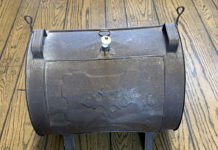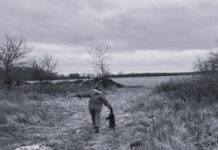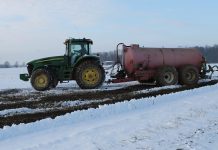What happens when you pull a $20 bill out of your pocket and tell a classroom of 4th graders you will give them the money if they can tell you something they ate for breakfast that did not come from the soil? Of course everyone raises their hand because they think they can take the money from you.
Only after we have traced various foods — such as milk, that comes from the cow that eats the grass or grain that was grown in the soil — do the students begin to understand that I am hanging onto my $20 bill. This is just one of the many ways that soil and water conservation districts in Ohio educate our citizens on the importance of our soil and water resources.
All soil and water employees “teach,” whether they are technical, administrative or support staff. Working one-on-one with a landowner, answering questions about our tree sale on the telephone or talking to a garden club, we all share the common goal of helping people recognize the importance of our soil and water resources.
Programs
Many districts have very successful youth education programs where an SWCD employee goes into classrooms at the teacher’s request. Lessons on soils and water quality are very popular and help the teacher meet the science curriculum standards in subjects that may not be as familiar to them. Many times we take in models that help students understand these concepts easily.
A good example is the Enviroscape Model, which is a watershed model that demonstrates how important it is to take care of the land to keep our water clean.
Another lesson that is popular with teachers is the Edible Soil Profile, which emphasizes the formation of soil and the characteristics in the different layers of the soil. The students then “build” their own soil profile in a cup with different types of cereal that resemble those features.
When we add milk to our model, students can see how water percolates through the soil layers before they eat their lesson. The students are also required to complete a worksheet listing the soil profile layers and characteristics of each layer. Teachers believe this program helps students recall the information when it is part of their testing.
Goal
Our goal is to help the student understand the importance of soil and how taking care of the soil today means we have food to eat tomorrow. All soil and water districts do some sort of adult education whether it is field days, workshops for teachers or gardeners, farmer breakfasts, tours or other special events.
With education being the number one priority for the Coshocton SWCD, adult education plays an important role in our program. This was the second summer for First Farm Friday where we worked with our local chamber of commerce to designate a First Friday for agriculture. Main Street was lined with farm machinery, animals, displays, and food samples along with people representing the industry to help our city neighbors understand the importance of agriculture in our community and beyond.
These events are more important than ever as each generation gets further removed from the farm. Helping adults understand where our food comes from is as important a message for them as it is for our students. Events such as this make “education” fun, and our goal is for them to walk away with a better appreciation of our natural resources.
Rewarding
A definition I found for education sums up our efforts: “education generally occurs through an experience that has a formative effect on the way one thinks, feels, or acts.” Nothing is more rewarding than seeing a “light bulb” moment when we are teaching or showing examples of conservation resource management.
Whether it is a practice in the field or a classroom lesson on the importance of soil; if it all comes together and someone understands, it makes the effort worthwhile. These moments keep us motivated to share our message
Conserving resources today ensures productive soils and clean water for tomorrow and soil and water conservation districts across the state work hard to share this message with our constituents. Stop by your local SWCD office to see what education programs they have to offer.













Check out this easy to understand explanation about something called Conservation Agriculture: http://youtu.be/ellYoAl9Hd0